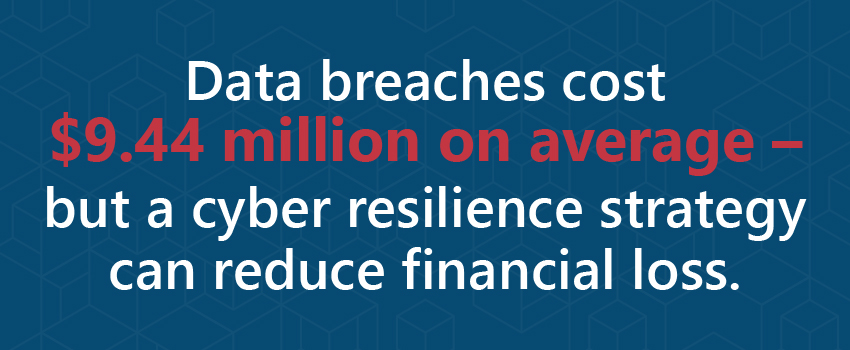A Quick Intro to Cyber Resilience for Businesses
No matter how many safeguards your business has implemented to protect your network, incidents happen. Corporate networks are never completely immune to disruption from cyber attacks, human error, natural disasters, or any other number of unpredictable events. And while comprehensive cyber security measures are vital for minimizing unplanned outages, an often overlooked but equally important component of an effective business continuity plan is resiliency.
Cyber resilience refers to an organization’s ability to continue operations even in the face of adversity. It involves implementing policies, procedures, and technologies designed to reduce the impact of network downtime on critical business processes. Here’s what you should know about cyber resilience – what it is, why it matters, and how to start improving your organization’s resilience today.
Cyber Resilience vs. Cyber Security: What’s the Difference?
Both cyber resilience and cyber security are important for business continuity, but they differ in their approach and scope.
Cyber security focuses on protecting against threats with measures such as VPNs, firewalls, antivirus software, access controls, and security best practices. It’s a defensive strategy to prevent unauthorized access to systems, data, and networks.
On the other hand, cyber resilience focuses on an organization’s ability to recover from cyber attacks and other network disruptions. It considers which business operations rely on technology, where critical data is stored, and how those areas can be affected during an outage to keep operations running, even if only in a limited capacity.

Why Do You Need Cyber Resilience?
Cyber resilience can provide benefits beyond strengthening your company’s security posture, including:
- Mitigating financial loss and a loss of confidence from stakeholders. According to IBM, data breaches cost U.S. businesses $9.44 million on average in 2022.1 With cyber attacks such as phishing and ransomware on the rise, having a plan to bounce back from threats is key for minimizing the damage.
- Increasing customer trust by demonstrating a commitment to security via cyber resilience certifications. Additionally, customers can see that your company is serious about data security and keeping customers informed by being transparent about your cyber attack response plans.
- Providing a competitive advantage over businesses without cyber resiliency by creating more effective and efficient processes. Developing a cyber resilience strategy involves identifying potential risks and determining how to mitigate them – or eliminate them – before they become a threat, which can result in improved operations overall.
How to Build an Effective Cyber Resilience Strategy
Developing a cyber resilience strategy begins with selecting a framework. Several model frameworks are available to help businesses increase their resiliency, such as the Cyber Resiliency Blueprint from NortonLifeLock and the Cyber Resiliency Review by the U.S. Department of Homeland Security.
The basic steps for building a cyber resilience strategy include:
- Identifying security vulnerabilities and essential data
- Developing safeguards to protect critical infrastructure and services
- Creating a system to detect threats, assess affected systems, and respond quickly
- Identifying the roles and responsibilities of responders
- Implementing a plan to restore data or services affected by downtime
Start Your Cyber Resilience Journey Today With NHC
An effective cyber resilience strategy can help you protect your business from the ever-growing threat of cyber attacks and minimize their impact. If you’re unsure how to increase your organization’s cyber resilience or need help developing a comprehensive strategy, NHC can help. Contact us today to learn how our security solutions deliver everything your business needs to ensure your network – and customers – stay safe.
Sources:



